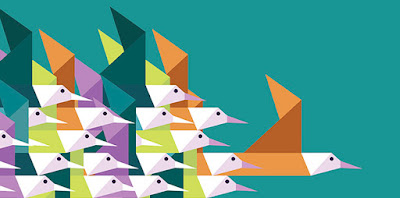Companies are not selling products, they are selling experiences
Customer experience sits at the intersection of awareness, purchase and retention. Each touch point is important in creating value and building emotion for your customers.
In today's post, I want to talk through the customer experience lens using my recent (and first) experience with Lyft.
A few weeks ago, I opened up my Uber app. I was running late to make it to an appointment. There was an event going on in Chicago and Uber prices looked absurdly high. I'm an avid price shopper so I downloaded the Lyft app and checked it out for the first time. Lyft's version of UberPool was much cheaper than Uber. Great. My driver picked me up, there was a passenger in the car already, I was on my way. We drop the passenger off and I hear GPS saying my destination is next. Then, suddenly, we start moving in the opposite direction of where I was headed.
Me: What's going on?
Driver: I have another pick up.
About 5 mins in, we were literally headed to a neighborhood that was really far out from my destination. Minor panic sets in.
Me: OK, but Lyft told me I would get to my appointment on time and given where we are headed, there is no way I will make my appointment. Is there anything you can do?
Driver: I'm sorry. But I'm probably going to have a few more pickups along the way. You might want to jump out and get a cab if you need to be there by a certain time.
I cannot be more than 10 mins late to my appointment. I don't see any cabs hanging around. I start frantically looking for a number to call for customer support. Lyft has a number. But when I dialed it, I got an automated message telling me all I could do was send them an email. "Good bye." What?!?!? There wasn't a person, there was no chat. All I could do was send an email.
Me: Is there a number you can call so I can talk to them?
Driver: Nope.
Of course, as the driver had predicted, we did one more pick up along the way. I have used UberPool often and the route has never been this bad. I sent Lyft an email to complain. They literally lost my business in a matter of 15 mins by ensuring Uber will always be my first pick.
As a follow-up, the survey I was sent was all about my experience with the ride and the driver. Both were fine. There was no place where I could tell them it was their map and their algorithms to allocate ride share routes efficiently that had massively failed for me. Although, in all honesty, those fails would not have felt as awful had I actually had the ability to tell someone about it in real-time.
In the end, I made it to my appointment. I was about ten minutes late. But what I remember from the experience was feeling anxious (about missing my appointment), angry (that I had chosen Lyft Line) and helpless (that I couldn't actually talk to someone who could fix things).
This was a great example of where the product ("the ride") met my expectations but the experience was a HUGE miss.
"I've learned that people will forget what you said, people will forget what you did, but people will never forget how you made them feel" - Maya Angelou



Comments
Post a Comment